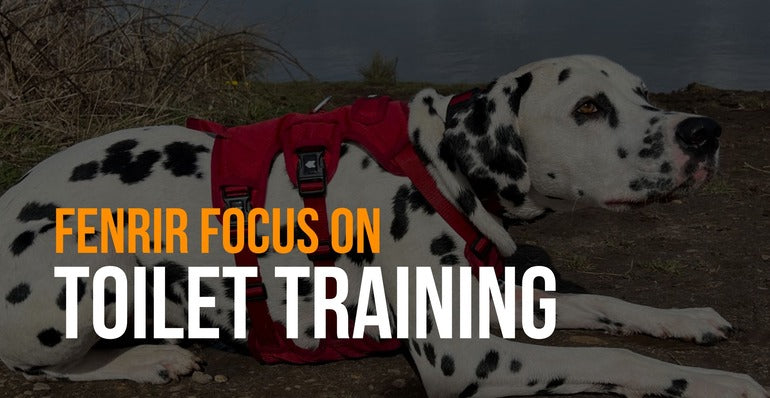How Do I Toilet Train My Dog?
Getting a puppy is an amazing experience. And the process of helping them settle in to their new lives should be filled with joy. But one of the first things most owners find themselves struggling with is toilet training. In this article, we will provide tips & tools to help you house train your puppy with ease. By the way, these methods also work for adult dogs – even if these dogs have never lived indoors before.
Raising Puppies 101
Raising puppies into well-mannered and obedient adult dogs has its challenges. But in our opinion and experience, toilet training is not one of them. And we will explain why housebreaking puppies is so easy.
How To House Train Any Dog
So, potty training puppies should be a relatively easy process. But what if you have adopted an older dog that is not toilet trained? How can you stop them from doing their business on your rugs, and maybe even on your furniture? Doing so is easier than you might think. The method we recommend for housebreaking adult dogs is essentially the same one we use for puppies. All you need to get started is a crate, a fillable chew toy, some meat paste, and a few treats.
Here at Fenrir, we are big proponents of using crates as training tools. Of course, we are not advocating locking dogs inside crates for long stretches of time. If you have to leave your house for 8 hours or more each day, we highly recommend finding alternative solutions. These include doggy day-care facilities, trusted family members or friends, and spacious, weather-proof outdoor kennels.
Crate Training Puppies And Adult Dogs
But when it comes to potty training, and to keeping your dog safe for shorter periods of time, crates are excellent.
Potty training dogs using a crate is based on the principle that dogs do not soil their sleeping spaces. Unless, of course, they absolutely have to. Puppies in particular cannot hold their bladder for very long. To avoid accidents, we recommend taking your puppy to their designated toilet spot every hour, on the hour. Setting a timer for this on your watch can be helpful. We advise starting your potty training with taking a fillable chew toy (such as the Fenrir Hammer) and filling it with meat paste. Put the toy in the freezer until the paste has turned solid, then place it inside the crate. Close the crate door for a few minutes before allowing your dog access. By allowing your puppy to watch this process, you condition them to associate their crate with tasty food and fun toys. Very soon, your puppy will want to go into the crate by themselves, because they have learned that good things await them in there.
Puppy Toilet Training Tools
The frozen toy should keep your young dog busy for a while. And most likely, they will fall asleep after having worked on the toy for a bit. When they wake up from their nap, you immediately take them to their designated toilet space. Once your puppy has gone to the toilet, mark this success with an enthusiastic “Yes!”. Then, give them a few treats, pet them, and play with them. After that, you can allow them some time to move around, first outside, then also in the home. We are not suggesting to give young dogs instant access to the entire house. But at least let them walk around in the room where their crate is, and in other safe areas. Puppies love to explore their environment, but they can also get into things, and have little accidents on the carpets. The best way to avoid such setbacks is by supervising your puppy whenever they are not in their crate.
However, we all have things to do in the house, and cannot constantly keep our eyes on our puppies. On the other hand, we do not want to confine them to the crate all the time. One possible solution is to tether your puppy to you, for example by clipping a leash to your belt. Another option is to put a long, but light training leash / long line on your puppy’s collar. We recommend using a comfortable flat collar such as our Ragnar Dog Collar for both options. Having a leash on your puppy allows you to pre-empt toilet accidents in the home. In this way, you avoid your dog forming the undesirable habit of going potty indoors. Having your puppy on leash whilst in the house also makes it easier to guide them to their toilet spot once another hour has passed. Whenever you notice that your puppy is tired and wants to rest, lead them to their crate, and gently encourage them to go in there.
With an adult dog that needs housetraining and / or is not used to living indoors, the process is very similar. The main difference is that adult dogs can hold their bladder for longer periods of time. So, instead of taking them out every hour, you can extend that time to every 2, 3 or 4 hours. Typically, the larger the dog, the longer they can hold their business.
Conclusion
Toilet training puppies and adult dogs can take time, patience and perseverance. But with the assistance of a crate, a leash and a flat collar, you can housebreak any dog. Some take longer than others, as not every dog is equally trainable. Older dogs often come with deeply ingrained habits. And if one of those habits is going to the bathroom indoors, you might need to be patient. But ultimately, habits can be changed. And as your new dog’s calm, consistent leader, you will succeed: Before too long, your perseverance will be rewarded by having a fully crate-trained dog with impeccable bathroom manners. And now, we wish you and the new dog in your life all the best!

